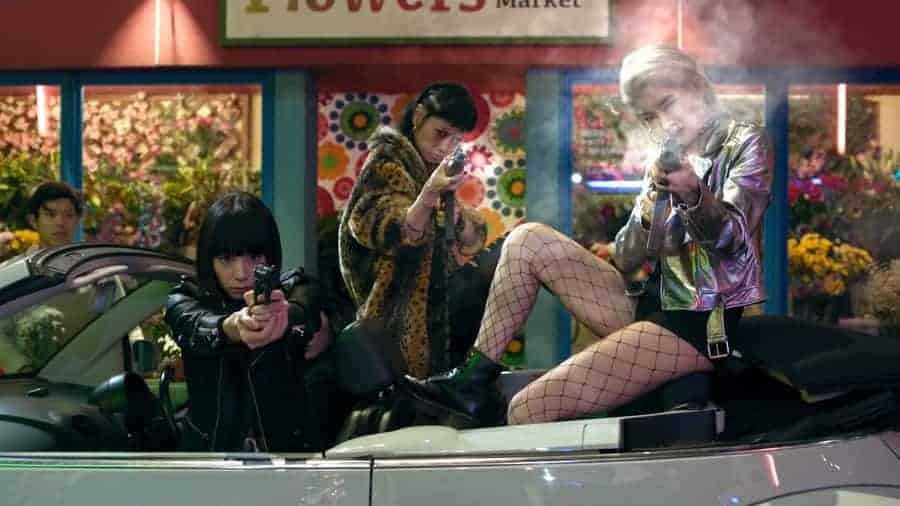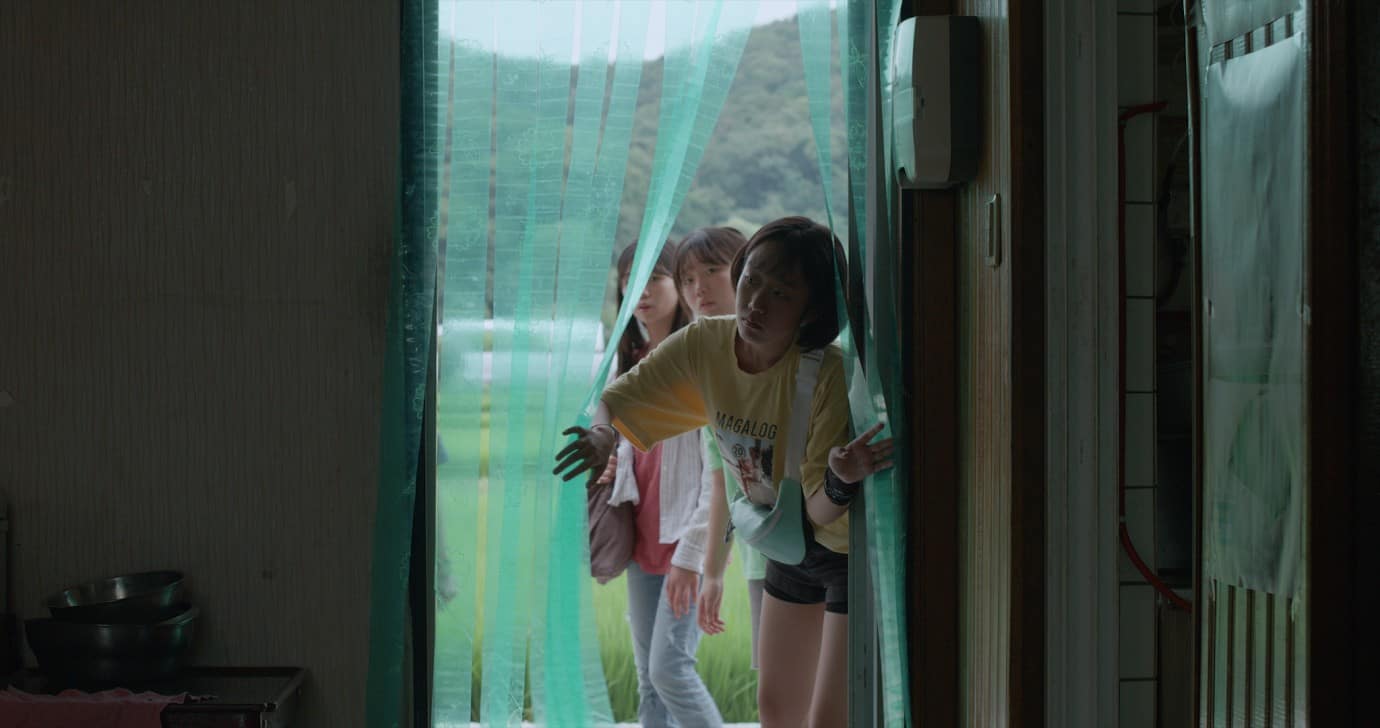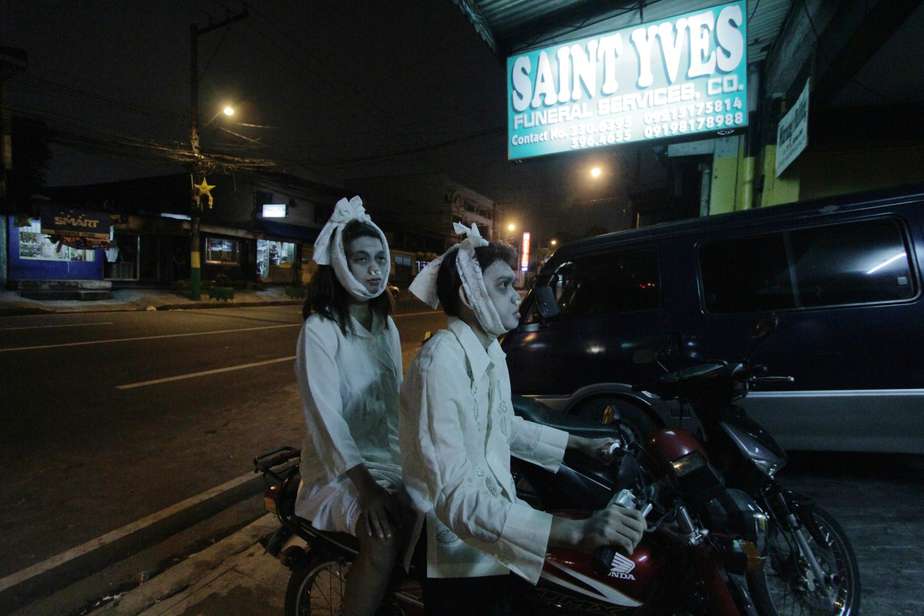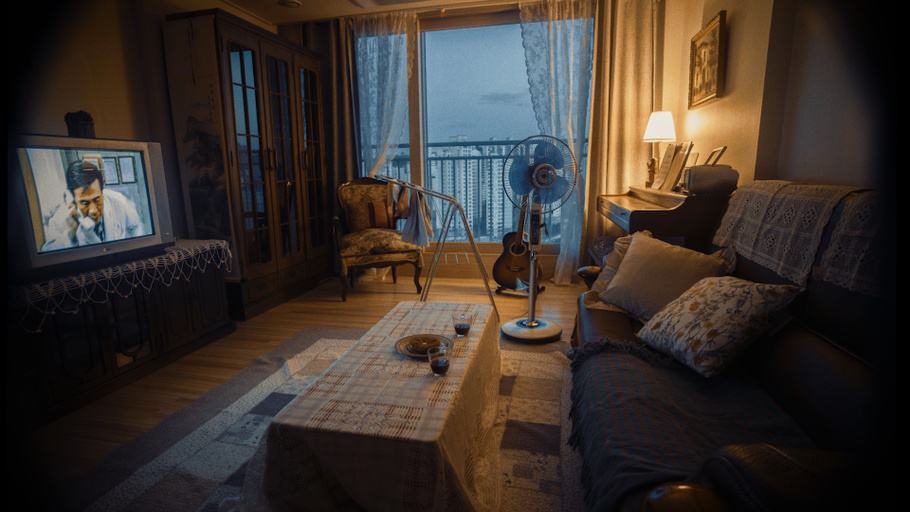In 2017, Sion Sono shot a 9-episode series for Amazon Prime Japan, “Tokyo Vampire Hotel.” This film is the festival/movie edition of the production, and a return to his gory, absurd past as much as a tribute to a number of his previous films.
Tokyo Vampire Hotel is screening at Five Flavours, that will be on in Warsaw November 15-22.
The story, which is actually based on a historic episode in which King Matthias Corvinus imprisoned Vlad the Impaler (aka Dracula), has the latter transformed into a whole tribe of the original vampires named Draculas, who are imprisoned by another tribe of vampires, the Corvinus. The Corvinus have some awful plans that involve destroying the whole of humanity and keeping just a number of them in a hotel of theirs (the titular one), in order to serve as their food.

However, the Draculas are on the rise from the bottoms of the Earth that are imprisoned, as they await for their Messiah, who turns out to be a Japanese girl named Manami, who finds herself in the middle of a century-long battle among the two vampire tribes, while she is having a party for her 22nd birthday. As a dracula named K and her associates try to help the girl reach their leader in an underground location that seems to exist beneath both Japan and Romania, the Corvinus, headed by Yamada, try to take her on their side. At the same time, a strange identity called Empress that inhabits the aforementioned hotel, seems to search for victims, while Elizabeth Bathory is also walking its corridors.
Sono, once more, did the thing that made him a legend among all fans of cult: he let his imagination run wild and depicted it on screen in the most absurd way, to the point that the film occasionally function as a collage of extreme concepts. At the same time, he also included themes from his previous movies. The gangs fighting each other from “Tokyo Tribe” have become the two opposing vampire clans. The chase that frequently appeared on “Tag,” this time involves Manami, and has a repeating music theme to go with it. The permeating sexuality and the intense colors of “Anti-Porno” are also present, this time combined with great dosages of violence and an unprecedented amount of blood, which frequently floods the screen, “Guilty of Romance” style. The change of genres of “Love Exposure” is also here, although in a much more finite level.

Add to that the impressive and lengthy action scenes, that feature guns, women with swords, an extremely violent vampire that seems to kill everyone with her long nails, the empress, who seems to have much in common with the hotel, an impoverished vampire that seems to be her sister, the always sensual Megumi Kagurazaka posing as Elizabeth Bathory, a number of flashbacks explaining the past of the main characters, and a bunch of Romanians in various roles, and you have the backbone of this truly insane movie.
Although his imagination is running wild here, Sono has induced the film with some authenticity, particularly in the technical department, with much of the shootings conducted in Transylvania, including locations such as the Bran Castle (commonly known as Dracula's Castle) and the Salina Turda salt mines, all of which provide an impressive setting for the movie. Furthermore, his ironic sense of humor and some minor sociopolitical comments (nobody cares about anyone in Shinuya, Japan cannot expect help from any outsider, etc) are also present, and induce the film with additional depth, despite the fact that they are buried under scores of violence and extreme images.
The production values of the movie are impressive, even just for the simple fact that the technical departments managed to capture Sono's imagination and depict it in all its glory. In that fashion, Tomoaki Iwakura and Ito Maki's cinematography present a number of exquisitely absurd images in settings that include Shibuya, the aforementioned Romanian locations, the hotel and its hellish interior, even restaurants and apartments. Junichi Ito, Emi Onodera and Yoshiki Ushiroda's editing retains the frantic pace of the movie with gusto, almost constantly changing camera views and locations, and in combination with music tracks that stretch from electronic to speedy heavy metal, make the film function as an extreme music video, quite frequently. Takashi Matsuzuka's production design and Yoshio Yamada's set decorations are both true wonders, as they find their apogee in the different rooms of the hotel, which include baroque luxury, technology and a truly hellish setting, all colored to the border of epilepsy. The same applies to Kazuhiro Sawataishi's costumes, while the special effects team has done an impressive job, particularly in the action scenes and the tons of spluttered blood.

The acting follows in the same, extreme footsteps. Kaho as K is great as the woman with the sword butchering scores of enemies and Mitsushima Shinnosuke a great villain as Yamada, acting with a fitting, hyperbolic theatricality, in absurd fashion. The grotesque artistry of the film's aesthetics personifies in Yumi Adachi's Empress, while Megumi Kagurazaka gives a somewhat restrained and dignified performance as Elizabeth Bathory. The one who steals the show though, along with Kaho that is, is Ami Tomite as Manami, with the 23-year-old becoming Sono's muse, having participated in a number of Sono's latest works. As I watched her shaving her hair, walking in the hotel corridors almost bald, filled with blood and completely out of control regarding her capacity for violence, I could not help thinking that Sono actually enjoys deconstructing the image of a former famous idol (she was a member of AK48) in a way that seems utterly disgraceful for her, in a tendency that also applied to Anti-Porno. What is even more impressive, though, is that Tomite thrives in this concept, to the point that she seems to enjoy having her former image completely shattered.
“Tokyo Vampire Hotel” is a great film that shows that Sion Sono is still a master of exploitation, and that when his imagination runs loose, masterpieces of the extreme are created.
















